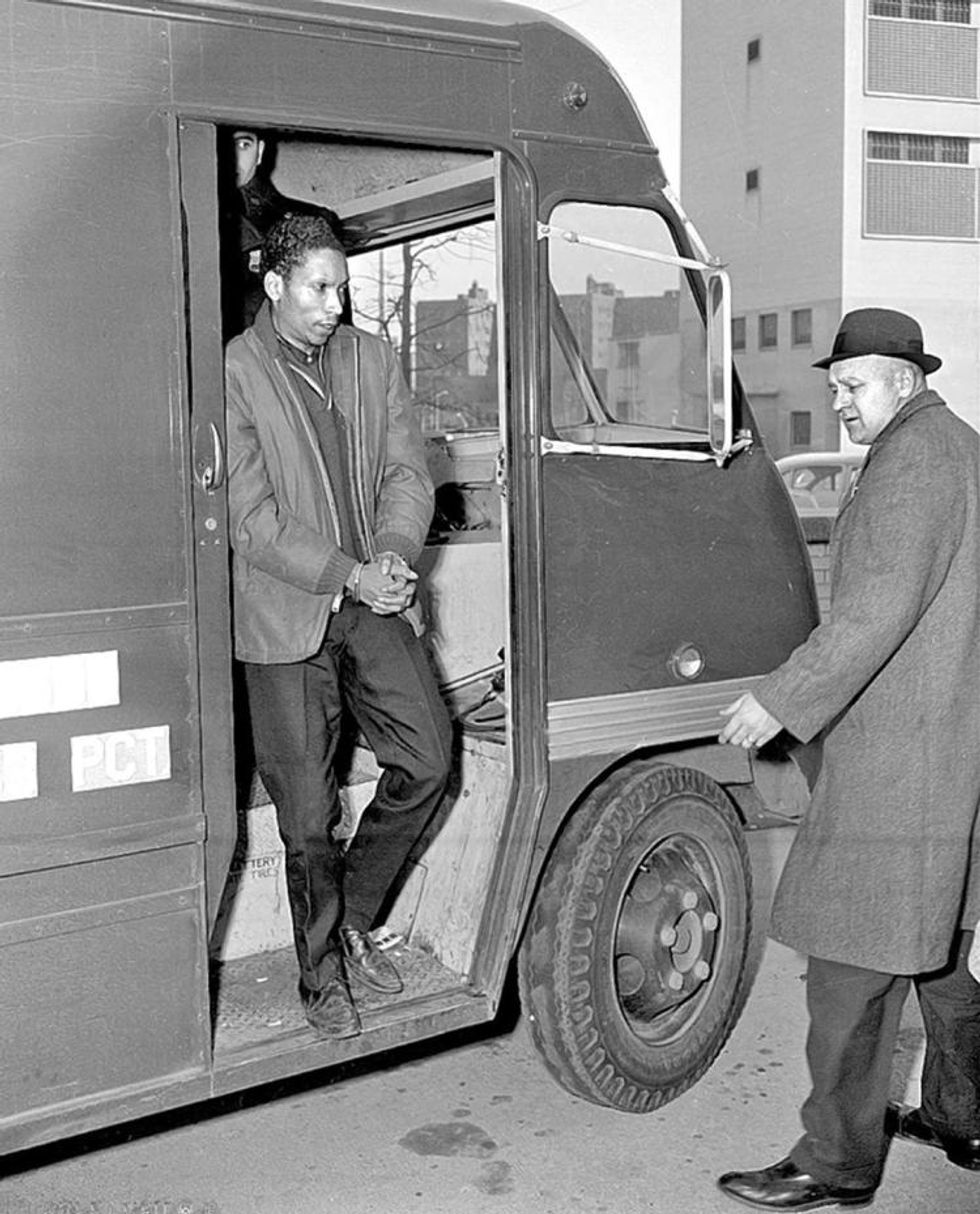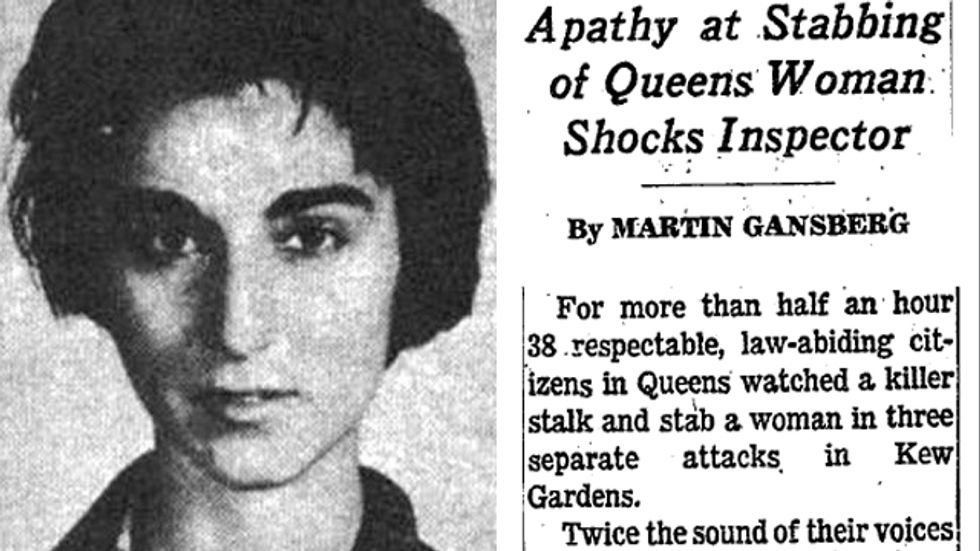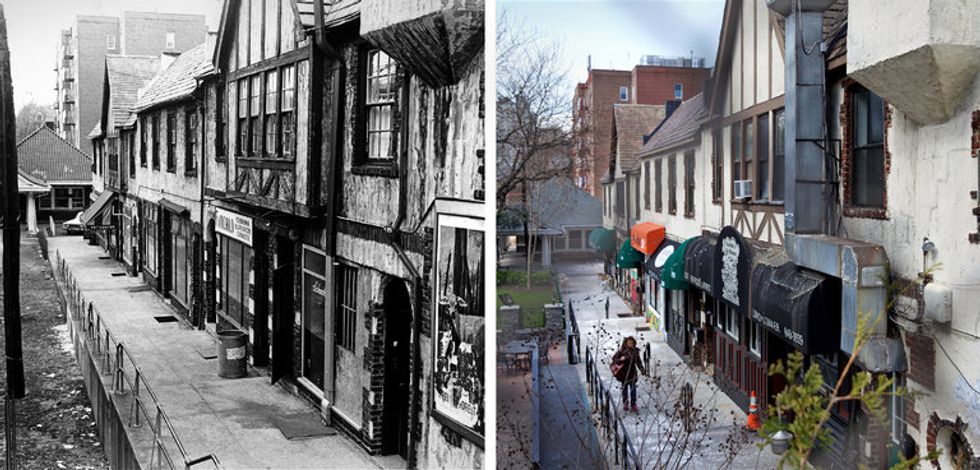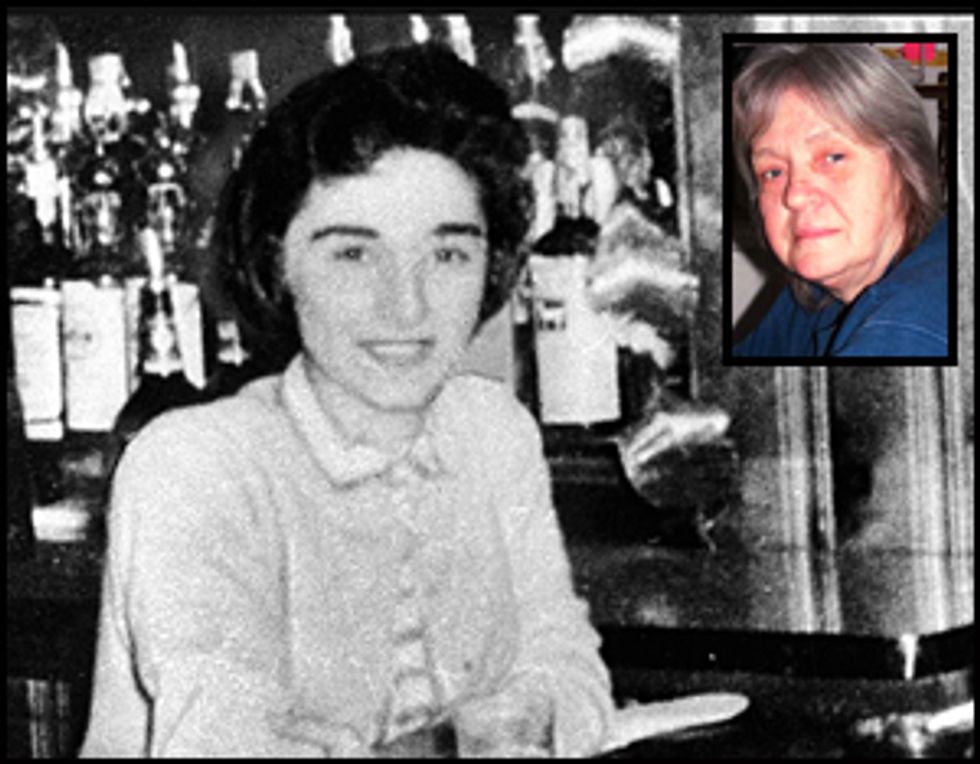Let us take a moment to remember one of the most infamous crimes of New York City history.
It is a brisk night in the after hours of March 13th, 1964. A young woman has just finished her shift at the Ev’s 11th Hour bar in Hollis, Queens. She drives her Fiat vehicle home to her apartment in Kew Gardens, Queens. What happens next will go down in dark history. After having parked her car, she walks to her apartment mere steps away. She does not make it. This woman was named Catherine Genovese, but everyone calls her Kitty.
Instead, her life takes a turn for the absolute worst when a man named Winston Moseley encounters her. He stabs her, rapes her, and robs her. This man does not even live in her neighborhood but is coming from the neighborhood of South Ozone Park just a few minutes away. You would expect most people on a cold, winter night in the a.m. hours to be asleep, but not Moseley. In what could be described as an episode of psychotic urging, Moseley leaves his warm home where his wife and two young sons are sleeping to get into his Chevrolet Corvair and go on the prowl for a female victim.
His act shows the animalistic features embedded in some humans that can reveal itself at any given moment. What his actions against Kitty also prompted was a theory that would be more than well known to anyone in the field of psychology. Indeed, it is printed in every psychology textbook you can find: the bystander effect. This psychological phenomenon theorizes that the more people there are surrounding a crime, the more likely they are as an individual to avoid assisting. Something triggers the human mind to relay that responsibility on the others and not on ourselves. Big cities and urban life contribute to an overall apathy in our humanity, psychologists find. We tend not to want to help in the face of adversity because it is none of our business. You may know this as bystander apathy or coined after Kitty herself, the Genovese syndrome.
You see, upon committing those three heinous acts against Kitty, came some mutters from neighbors who overheard the noise playing out. Upon her initial stabbing, she screamed out in pain for help prompting a light from the nearby apartment complex to flicker on, a window to crack open and the man inside to yell “Hey, get out of there.” “What are you doing?” and “Leave that girl alone!” Moseley fled the scene but, unfortunately, returned after having changed his hat as a form of disguise to fully carry out the crime as Kitty had dragged herself into the apartment’s hallway for safety.
In addition to being one of the most infamous crimes ever, this crime can also be jotted down as the most misrecorded. Several newspapers at the time, but most infamously The New York Times, mishandled the cold, hard facts of the story. What was dubbed “38 respectable, law-abiding citizens in Queens watched a killer stalk and stab a woman in three separate attacks in Kew Gardens...Not one person telephoned the police during the assault...” all across headlines needs to be debunked. Still, today we have a lot of misinformation about this case. Somewhere along the line, it has been debunked but there is still a lingering confusion as to whether or not the neighbors willingly avoided stopping a murder from taking place. It is said that the murder was out of sight for these neighbors from their high-rise windows and that they assumed it was just a mere quarrel with no dire consequences, so they kept asleep.
Why this headline may have become the going one at the time is for the pure clickbait equivalence of the time. The writers may have very well wanted readership for their story and who would flip past a headline as jaw dropping as such? No one, really. And so, this headline became the one read by most people then and still up to now carries on with its exaggeration that is far from the actual truth.
However, Kitty's neighbors say that headline is untrue. One famous "witness" and neighbor of Kitty Genovese, who yelled at Moseley, is practically the only one of her neighbors who spoke out that night and subsequently to reporters about the incident. Robert Mozer was also a lawyer. Residents of the neighborhood remember it being quiet, tranquil, and crime-free for the most part, so much so that they kept their doors unlocked. Kitty’s neighbors probably never expected the cries they heard (if they did hear it in their sleep) to be that of murder right below them. But if any of us want to play devil’s advocate about this particular case then it is extremely imperative to note that Kitty Genovese was a lesbian. She shared the apartment she was going home to that night with her live-in girlfriend, Mary Ann Zielonko. Kitty and her partner had been living in the Austin Street apartment for about a year. Neighbors had to know of this ongoing relationship. Though speculative, could her same-sex relationship be the reason no came to her immediate aid? We may never know if no one says. So many years after the crime, many of the witnesses do not want to talk about it or have passed away.
Mary Ann had been bowling that night with a friend, returned home and went to bed. In retrospect, she is not completely dissimilar than all the other witnesses who could have helped but just did not know primarily because they were sleeping when this crime took place in the wee morning hours. Mary Ann woke up to the knock of policemen at the door later that morning and they took her to the hospital to identify Kitty’s body. She was also questioned for the murder, given her close relationship with Ms. Genovese. Five days later, however, Winston Moseley confesses to not only the crime against Kitty Genovese but of others against a fifteen year old girl named Barbara Kralik and twenty four year old Annie Mae Johnson.
This case brings about the issue of a woman's safety, the effect of bystanding/apathy, and triumphantly the question of “why murder?” Even more so, it gives rise to the issue of misinformation that thrusts journalism into a pit of misrecorded history. Catherine Genovese unfortunately left this Earth too soon. Her legacy, though, teaches us that we should be mindful of our surroundings and be at a ready to help others.











 The minimum wage is not a living wage.
StableDiffusion
The minimum wage is not a living wage.
StableDiffusion
 influential nations
StableDiffusion
influential nations
StableDiffusion












